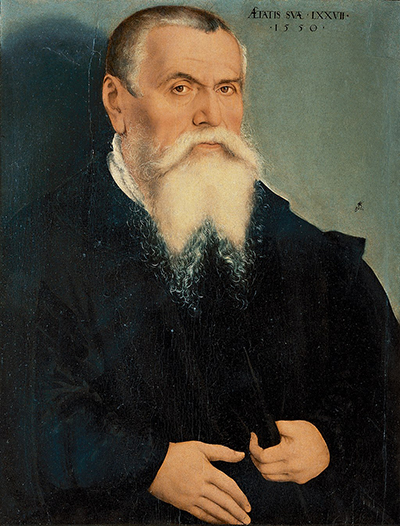Lucas Cranach was a true Renaissance master who impressed in a variety of different art forms whilst also becoming a local politician of some note. His drawings offer a stripped down insight into his natural technical skills.
Pen and black ink, sometimes with washes, was the most frequent method used by Cranach within his drawings. The majority of those that still remain are of portraits or animal depictions. There are also some more complex pieces that would have been study pieces for future paintings. Many of his drawings went into very precise detail, which wasn't always the case during this period, when others would produce loose depictions that would not be intended to be used as completed artworks in their own right. There are also clear similarities between the content drawn by Durer and Cranach, both of whom enjoyed capturing the precise form of animals and birds. The former also did many of these in watercolour too.
The quality of Cranach's work would leave behind a huge impact. In fact, his legacy was continued by his own workshop, led by his son, for several decades, with similar pieces being produced that essentially extended his own lifetime. Whilst some would criticise his son for taking advantage of his father's creative qualities, the situation simply underlined the passion felt for the Elder's work and the pointless attempt it would have been to try to outdo his father. This period was dominated by prints from woodcut engravings, and drawing was a key element to that medium. Some German artists from this era became used to a stark contrast of black and white because of their work in etching, making it harder to then understand the more subtle concepts of art.
Albrecht Durer had initially been inspired by his father's medical and natural world books that contained some beautifully illustrated elements that brought different plants to life. He would go on to produce illustrations in a similar style, as well as watercolour paintings that bore similarities in the ways in which they were put together. Cranach himself would also become involved in book illustrations, including decorating the Prayer book of Emperor Maximilian around its borders. He also worked on a number of design projects for various publications by Martin Luther. Something we have learnt is that Cranach would build up drawings in levels, first putting together individual items before creating more complex compositions, again within the same use of pen, ink and washes.
The artist put together a large number of animal studies using the same combination of pen and ink, right across his career. The same forms would then also appear within his paintings at a later date, but placed within the bright colour that typified his work in that medium. One good example of this would be his frequent depictions of stags within simple drawings, and then again in some of his most famous paintings. Some of them would have a number of different washes and would also often be completed on both sides of the piece of paper, which became known as working on recto and verso. This was common ever since the Italian Renaissance, with this resource being harder to source than it is today, so many artists would put different studies together on the same sheet, before reversing and carrying on once more.
The various stag sketches started with forms created via dark chalk, with varying widths of wash then added. Cranach would use different coloured washes together in the same drawings from time to time. The artist also tended to have the animal's facing directly at the viewer. He is known to have started to produce these in around 1530, although there remains a large amount of uncertainty with regards to accurate dating around most artists of this period, simply because it was so long ago and that they were not researched in as exhaustive a manner as the true masters of the Italian Renaissance. In recent years, however, tastes have broadened to include those on the periphery who still possessed uplifting artistic qualities and the likes of Durer and Cranach are no-longer just the interest of German domestic art followers, but many more across Europe and North America.




